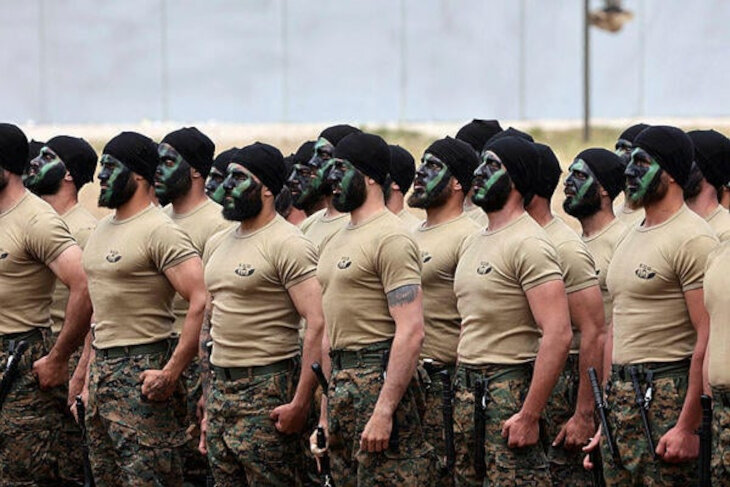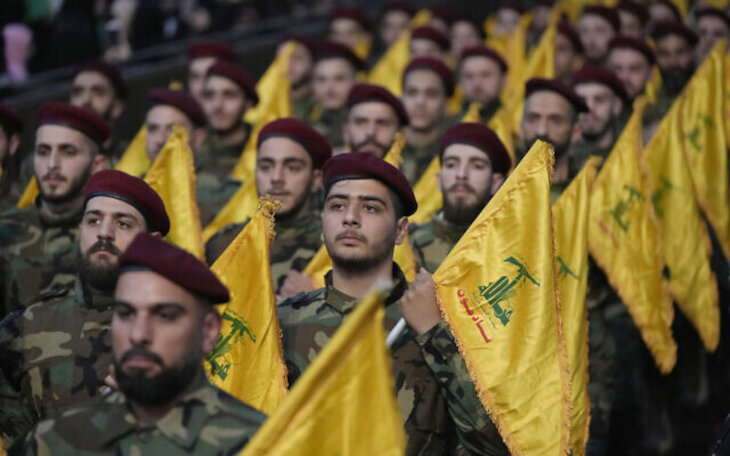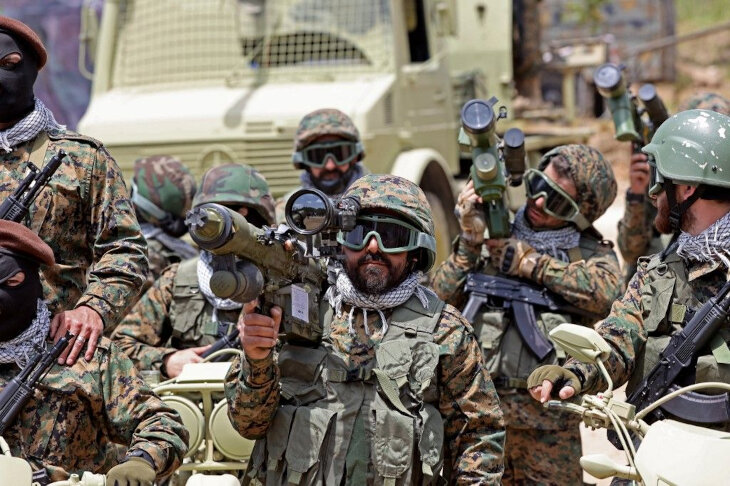 Iran’s Attack on Israel
Iran’s Attack on Israel


10 min read
Key facts to help you understand events today.
Since October 7, Hezbollah has launched over 1000 rockets into Israel from its bases in southern Lebanon. Here are 12 facts about Hezbollah that everyone needs to know.
Hezbollah was the brainchild of two Iranian clerics and close friends: Ruhollah Musavi Khomeini and Ali Akbar Mohtashamipur. Khomeini would go on to lead the Iranian Revolution of 1979, after which he became the Supreme Leader, or Ayatollah, of Iran, with Mohtashamipur as his loyal lieutenant (and later Iran’s Minister of the Interior).
 Ali Akbar Mohtashamipur
Ali Akbar Mohtashamipur
Since soon after its founding in 1964, the Palestine Liberation Organization (PLO) maintained military training camps in Lebanon. In the early 1970s, Mohtashamipur forged links between the troops he and Khomeini were raising and PLO fighters, allowing Iranians to train alongside the PLO. This required a great degree of diplomacy since PLO leaders adhere to the Sunni branch of Islam, while Iranians are mostly from the Shi’ite branch of Islam. Normally bitter enemies, Mohtashamipur’s fighters and the PLO found a common enemy which united them: Israel.
From the beginning, Hezbollah’s founders viewed it as a way to extend Iranian influence into its southern neighbor Lebanon, and eventually to attack Israel.
Journalist Ronen Bergman notes “At the training bases, PLO experts taught young men the arts of sabotage, intelligence operations, and terror tactics. For (PLO leader Yassir) Arafat, having Khomeini’s men train at his bases was a way to acquire support for the Palestinian cause and to make himself into an international figure. But for Khomeini and Mohtashamipur, it was part of a long, focused strategy: to eventually extend the Islamic revolution they were fomenting in Iran to Lebanon, a small country in the heart of the Middle East, with a large population of impoverished Shiites ripe for incitement. Khomeini wanted to stake out ‘a forward strategic position that brought us close to Jerusalem’ - Lebanon’s border with Israel.” (Quoted in Rise and Kill First by Ronen Bergman: 2018)
Hezbollah continues to be funded primarily by Iran, and to take most of its orders from Iran’s leaders. It is also supported by Syrian leader Bashar al Assad, who provides funding and fighters to the group. In the complicated world of Lebanese politics, Hezbollah is a powerful voice for Syria’s involvement in Lebanese governance and life.
Hezbollah formed during Lebanon’s brutal civil war, which lasted from 1975 to 1990. Before its civil war, Lebanon’s governance was carefully divided between three ethnic groups: Christians, Sunni Muslims, and Shiite Muslims. In order to gain allegiance from Shiites and others, Iranian clerics set up a network of Islamist schools and charities, establishing what some observers called a “state within a state”. It was particularly active in the south of Lebanon, where there is a large Shiite population. Hezbollah was formally established in 1982, though much of its infrastructure had been in place for years.
The late 1970s was a violent time along Israel’s northern border as the PLO staged a series of audacious raids into Israel. On the morning of March 11, 1978, PLO terrorists docked a boat they’d piloted from Lebanon along Israel’s coast. The terrorists shot a passerby whom they asked for directions, then killed the occupants of a taxi and used their car to drive along Israel’s coastal road. They hijacked two public buses, amassing 70 hostages, and shot at and lobbed grenades at cars on the highway. By the end of the day, 38 civilians were dead and 71 wounded.

The following year, the PLO again invaded Israel from Lebanon, landing a boat in the Israeli city of Nahariya. After shooting a police officer, terrorists entered an apartment building and kidnapped and later killed a young father named Danny Haran and his four-year-old daughter Einat. Hiding from the terrorists, Danny’s wife Smadar hid with the couple’s two-year-old daughter Yael in a storage cabinet - where Smadar accidentally smothered Yael to death trying to quiet her whimpering cries lest the terrorists hear them.
After these and other attacks, Israel launched an attack on PLO bases in southern Lebanon in 1982, eventually driving the PLO out of Lebanon. (It quickly re-established its headquarters in Tunisia.) With a power vacuum in southern Lebanon, Iran’s Ayatollah Khomeini sent 1,500 soldiers to the region in 1982 to train local Hezbollah fighters and organize the group’s military headquarters and soldiers.
At first, Hezbollah’s stated aim was to drive Israeli soldiers out of Israel's self-declared buffer zone along Lebanon’s border with Israel. After Israel withdrew all of its troops from Lebanon in 2000, Hezbollah continued to build up its army and attack Israel.
The year after its formation, Hezbollah began attacking not only Israeli but also American targets. On April 18, 1983, Hezbollah terrorists attacked the US Embassy in Beirut, killing 63 people. Six months later, on October 23, 1983, a Hezbollah suicide bomber detonated a massive bomb outside US military barracks in Beirut, killing 241 American servicemen and women. Moments later, another Hezbollah bomber targeted a French military base, killing 58 French paratroopers.
 Rescuers probe the wreckage of the U.S. Marine barracks near the Beirut airport, a day after a suicide truck bombing
Rescuers probe the wreckage of the U.S. Marine barracks near the Beirut airport, a day after a suicide truck bombing
Other Hezbollah attacks include: the 1984 bombing of the US Embassy in Beirut (63 killed); a 1985 hijacking of a TWA flight from Egypt to the United States (1 American soldier killed); the bombing of Israel’s embassy in Buenos Aires in 1992 (29 killed, 242 injured) and the massive bomb that destroyed the Jewish community center in Buenos Aires two years later, in 1994 (85 killed, over 300 injured); the 2007 attack on a US military base in Iraq (killing 5 soldiers); and an attack on a tour bus carrying Israelis in Bulgaria in 2012 (killing 6 and injuring 32).
The United States declared Hezbollah a terrorist organization in 1997. Canada did the same in 2002. The EU declared Hezbollah’s “military wing” a terrorist group in 2012.
Under the terms of the ceasefire of Lebanon’s civil war, Hezbollah was the only militia group allowed to keep its weapons. Since then, Hezbollah has maintained both a massive standing army, as well as operated a Lebanese political party.
Hezbollah first ran for - and won seats in - Lebanon’s parliament in 1992. Today, it holds 13 seats in Lebanon’s 128-seat parliament. In addition to its political activities, Hezbollah provides a vast array of social services, replacing the Lebanese state in some areas of the country, and buying public support with its largess.
In a 2021 report, the US State Department noted “Iran continues to provide Hizballah with most of its funding, training, weapons, and explosives, as well as political, diplomatic, monetary, and organizational aid.” The State Department estimates that Iran gives Hezbollah “hundreds of millions of dollars annually”.
That’s only part of Hezbollah’s extensive funding network. Syria’s leader Bashar al Assad gives Hezbollah extensive support, as do Shiite Muslims around the world. Hezbollah is funded by “profits from legal and illegal businesses. These include smuggling contraband goods, passport falsification, narcotics trafficking, money laundering, and credit card, immigration, and bank fraud.”

Hezbollah’s leader, Sayyed Hassan Nasrallah, boasts that Hezbollah has an army of 100,000 soldiers. (That number dwarfs the size of Lebanon’s standing army.) Experts estimate that Hezbollah maintains an arsenal of 130,000 rockets, including precision missiles, armed drones, and anti-tank, anti-aircraft, and anti-ship missiles. Hezbollah claims they have the capability to send rockets to all parts of Israel.
Hezbollah is an intensely hostile enemy on Israel’s northern border. It has sent thousands of rockets into Israel through the years, and has attempted ground invasions of the Jewish state. In September 2006, Hezbollah fighters crossed into Israel and attacked Israeli forces, killing eight Israeli soldiers and kidnapping two. That sparked a limited war, which saw Hezbollah send over 3,000 rockets into Israel, killing over 130 people.
Hezbollah leader Hassan Nasrallah has sent arms, including bombs, guns, and anti-tank missiles to terrorist groups bedeviling Israel, including the Palestinian Authority, Islamic Jihad, and Hamas. In June 2002, Nasrallah praised suicide bombings inside Israel for “creating a deterrence and equalizing fear.”
In 2019, Hezbollah fired antitank missiles at an Israeli army base near the Lebanon border. In 2020, Hezbollah attacked an Israeli military base in the Israeli town of Menara. The following year, Hezbollah once again sent a volley of missiles into Israel. Since Hamas’ October 7 attack on Israel, Hezbollah has been attacking Israel daily, sending thousands of missiles into Israel.
Hezbollah officials have boasted of their close ties with Hamas, and have said they were in contact with Hamas organizers of the massive October 7 attack which saw 1,200 Israeli murdered and about 240 taken hostage.

Reuters explains that “Hezbollah has been a source of inspiration and support for other Iranian-backed groups across the Middle East. It has trained armed groups in Iraq and taken part in fighting there.” Iran maintains proxy armies in Lebanon (Hezbollah), Iraq (various groups, including Kata’ib Hizballah), Yemen (Houthis), and Gaza and the West Bank (Hamas).
Hezbollah maintains a special 2,500-man unit called Radwan force that is dedicated to plotting against the Jewish State. Radwan fighters wear all black - even blacked out goggles - and are highly trained and motivated to invade Israel and wreak mayhem, much as Hamas did in Israel’s south on October 7. Radwan has even built a huge network of tunnels from Lebanon into Israel; the Israeli Army monitors them and blocks them when they detect them.

A month before Hamas’ attack, Radwan forces staged their own practice, “simulating attacking Israeli communities, capturing prisoners and shooting Israeli symbols, including the Star of David. With motorcycles, unmanned aerial vessels, well-stocked weaponry… You name it, they displayed it,” explained Orna Mizrachi, a senior researcher at Israel’s Institute for National Security Studies. “The unit’s aim is to infiltrate Israel and conquer swaths of the Galilee.”
On January 7, 2024, Israel assassinated Wissam Hassan al-Tawil, the deputy head of a unit inside Radwan’s forces. According to Hezbollah, he had “led several operations targeting Israeli military sites and deployments near the border since Oct. 7.”
Inside Lebanon, Hezbollah is widely popular. Roughly a third of Lebanese people want Hezbollah to declare war on Israel. (80% of people in Lebanon support Hamas’ October 7 attack.)
In the West, Hezbollah has plenty of supporters as well. Former head of the British Labour Party Jeremy Corbyn invited Hezbollah (and Hamas) representatives to Britain’s Parliament and once called them his “friends”. (He has recently apologized for doing so.) In London, anti-Israel marches have featured Hezbollah flags and chants of “We are all Hezbollah”.
In the days and weeks to come, it is likely that we’ll be hearing more about this terror group. If the recent past is any guide, much of what we will read on social media and in the news will be inaccurate. It’s crucial we each educate ourselves about Hezbollah’s bloody history and speak out about this brutal terror organization.

I have too much to read, and was about to delete this till I saw who wrote it. Then I had to read it, because Dr. Miller is always way to good to skip anything she writes. This was such an informative article, which I will print out and keep. Thank you.
Is Haaretz online subscription worth subscribing to? It seems awful left liberal and Hamas sympathetic. Am I over interpreting or what?
Thank You knowledge is power.
Excellent! I would also love more articles like this. Specifically, background info for Qatar and Turkey.
Unless Iran is decisively dealt with, the middle east may never know peace. The common denominator of volatility in this region is Iran.
Excellent article!
The whole point of JEremy Corbyn is that he did not get to be British Prime Minister.
He lost his position as opposition leader because he lost four national elections.
One war at a time.
Let's finish off Hamas.
Then we can deal with Hezbollah.
How naive of us the citizens in the U.S. to think that Hezbollah’s terrorist organization was just a small group of crazy Israel hating militants. This article says it all. They planned, organized, recruited, and developed themselves into a major army with factions of other terrorist groups. Were we all sleeping in the 70’s & 80’s & 90’s? I’m sorry that 1200 people had to die on Oct 7 for ever to awaken from their slumber. Thank you for this comprehensive history so that we all know what & who we are dealing with.
IF the US and others allow it, that is!
Realize that every time Israel is on the verge of a decisive victory in a defensive war, some superpower calls for a ceasefire in the name of "peace," or a rogue-like gov't. that's aligned with Arab terrorists (such as S. Africa) maliciously, ironically & hypocritically accuses Israel of war crimes, genocide or the like.
In case we thought Holocaust denial was absurd, anti-Semites have come up with a vicious new canard: Jews, they idiotically say, were responsible for causing the debacle!
Like I said, one war at a time.
Fighting a multi-front war will stretch us.
Better to deal with them separately.
When it's Hezbollah's turn, we'll call Biden's bluff.
Indeed, the reason most of Israel’s wars were so short in duration is because as soon as Israel started to win the world mobilized itself to end it. Because Israelis generally speaking are lovers of peace rather than coming from a warrior culture, most Israelis welcomed the end of fighting. But now it is evident that this was an error.
I think one point of the article is Hesbollah feeds/funds Hamas, so it’s all the same hatred against us.